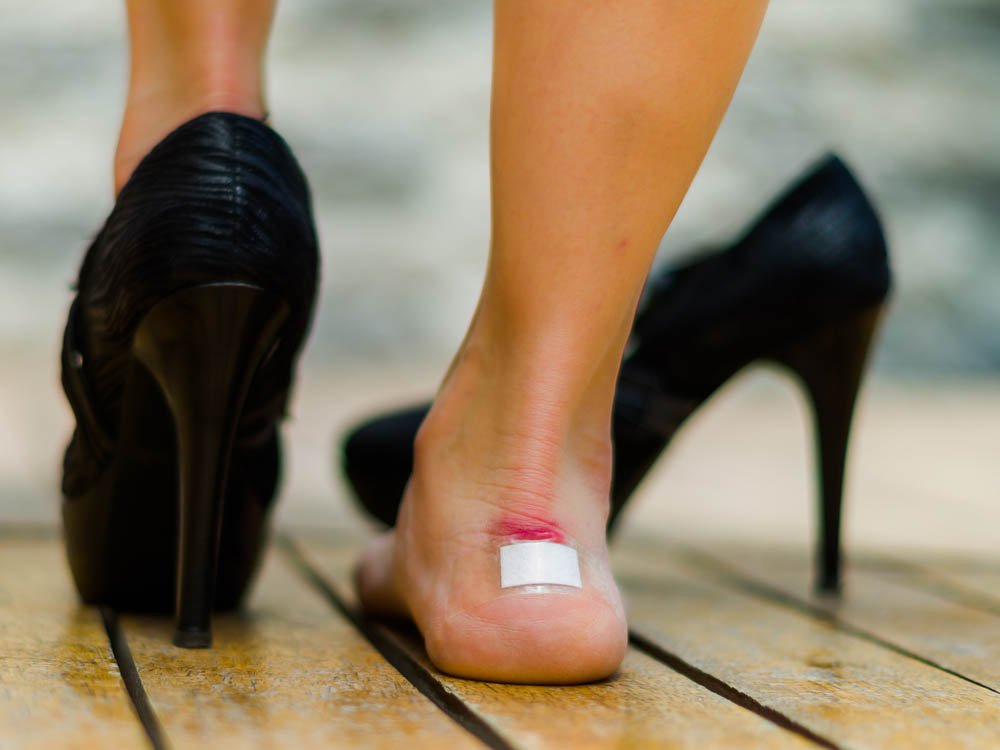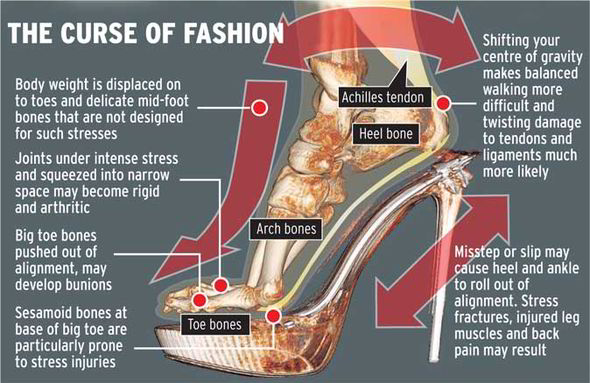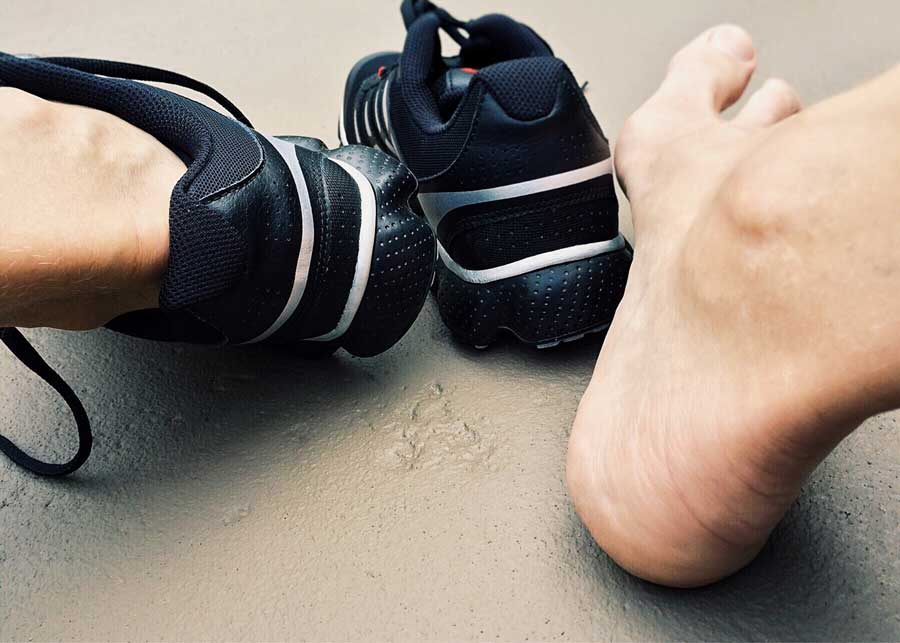Yes size really does matter… But you knew that!!
Well-fitting shoes are important throughout life, to provide support, comfort and reduce pain.
Wearing appropriate footwear is important to our foot development, health and enjoyment of life. Our feet are a hard working part of the body that supports body weight and gets us about, yet all too often little attention is paid to our feet (until they hurt that is).
Fashion often over rides sensibility. Ill-fitting shoes can create a problem or make an existing problem worse.

Sore heels from poor fitting footwear – photo credit Readers Digest
Unique
No two pairs of shoes, no two pairs of feet…heck not even one pair of feet, are the same. The Society of Shoe Fitters state that only one third of the population have average feet. Our shoe size depends on many factors such as shoe style, where the shoe is made, the materials used and heel height.
Ideally we should be getting our feet measured and shoes fitted to help reduce foot related problems – and this doesn’t just apply to children. When we are children the bones in our feet are soft and only harden as we grow, so feet are at their most vulnerable during this time (a future article will be written specifically about footwear in children so keep visiting the website!)
However, our feet continue to change shape and size throughout our lifetime. As we get older we may suffer from various foot problems such as flatter feet, bunions, hammer/mallet toes and swollen feet.
Shoe Fitting
You may be surprised to know that there is no standardisation of shoe sizing in the UK and that guages are all calibrated differently. Also the gauge which measures length and width of the feet should only really be used as a guiding point as the actual shoe size you have may differ from the guage.
As feet are not a standard size or shape and footwear varies widely, it is best to get a qualified shoe fitter to advise and fit your shoes. This website shoefitters-uk.org will give you more information and location of your nearest approved fitters. Look for the logos or ask in the shop if anyone is a qualified fitter. Advice and shoe fitting is free so take advantage!

If this is not possible then it is important that you are aware of the consequences of ill-fitting shoes and find the most comfortable fit.
Damage To Feet There is no one shoe that meets all our needs. General good advice would be to wear the right shoe for the right occasion. Ill-fitting shoes don’t just affect your feet, but also your posture.
Altered foot position and discomfort can shift your body weight and alter the way you walk. This can put strain in other areas such as knees, hips and back. Shoes that are too big can be as harmful as shoes that are too small. Tight shoes can cause pressure points, blisters, corns, callus,bunions and hammer toes.
There should be approximately 1cm space between the longest toe and the front of the shoe, and you should be able to wiggle your toes.
Shoes that are too big and roomy can mean that the foot is not adequately supported and moves too freely within the shoe. The back of the shoe is important as it holds the foot in place and helps prevent it slipping too far forward, causing restriction of the toes in the toe box (front of the shoe).
As for high heels… we can all appreciate a delicious pair of heels but come on, need I elaborate? You must have experienced the ‘aaahh’ feeling when kicking off those heels? Look at the image below to see some of the impact of high heels on the body.

The curse of fashion on feet – photo credit express.co.uk
If you suffer from a health condition that affects your feet (such as rheumatoid arthritis and diabetes) then extra care needs to be taken to ensure a good supportive shoe fit. Rheumatoid arthritis can cause a wider shaped forefoot and painful joints. People with diabetes may have loss of foot sensation and are therefore less likely to get the warning signs of pain. If foot ulcers develop they can be slow healing, affect quality of life, lead to amputations and cause death in 50% of cases within 5 years.
This is a shocking statistic: nice.org.uk/guidance/ng19/chapter/introduction
Footwear does not have to be unfashionable or boring! Try to be sensible by wearing shoes that are comfortable and that are right for the occasion. Shoes that are not ‘ideal’ can be worn for short periods but be aware if they start causing you discomfort.

Poor fitting sheepskin boots are not supportive & provide no foot support – photo credit willpowerpersonaltraining.com
High heeled shoes alter weight distribution, sheepskin style boots are not supportive and allow slippage in the shoe and ballerina style pumps also provide no foot support.
COMFORTABLE FEET ARE HAPPY FEET!
What To Consider When Buying New Shoes:
- Shop for shoes in the afternoon when feet are more swollen. Buying shoes early in the morning will mean that they will feel much tighter when worn later on in the day.
- Ideally buy shoes from a shop that have qualified shoe fitters in attendance.
- Feet should be measured when standing as weight bearing spreads the foot.
- Remember that a pair of feet are not usually the same shape or size. Always buy shoes that accommodates the bigger/longer foot. Remember that the longest toe is not always the big toe.
- Look for shoes that are available in different fittings.
- When trying on shoes, ensure that you have on the socks or hosiery that you intend to wear with the shoe.
- If you can feel any ‘tight spots’ when trying on shoes, be aware that these shoes are likely to cause you problems and pain.
- Shoes should fit snuggly around the foot, giving support at the heel to prevent your foot from slipping forward and have adequate depth and width of toe box to prevent pressure on the forefoot/toes. It is best if shoes are adjustable with buckles, velcro or laces.
- Shoes should ideally be made of natural materials so that they can breathe.

